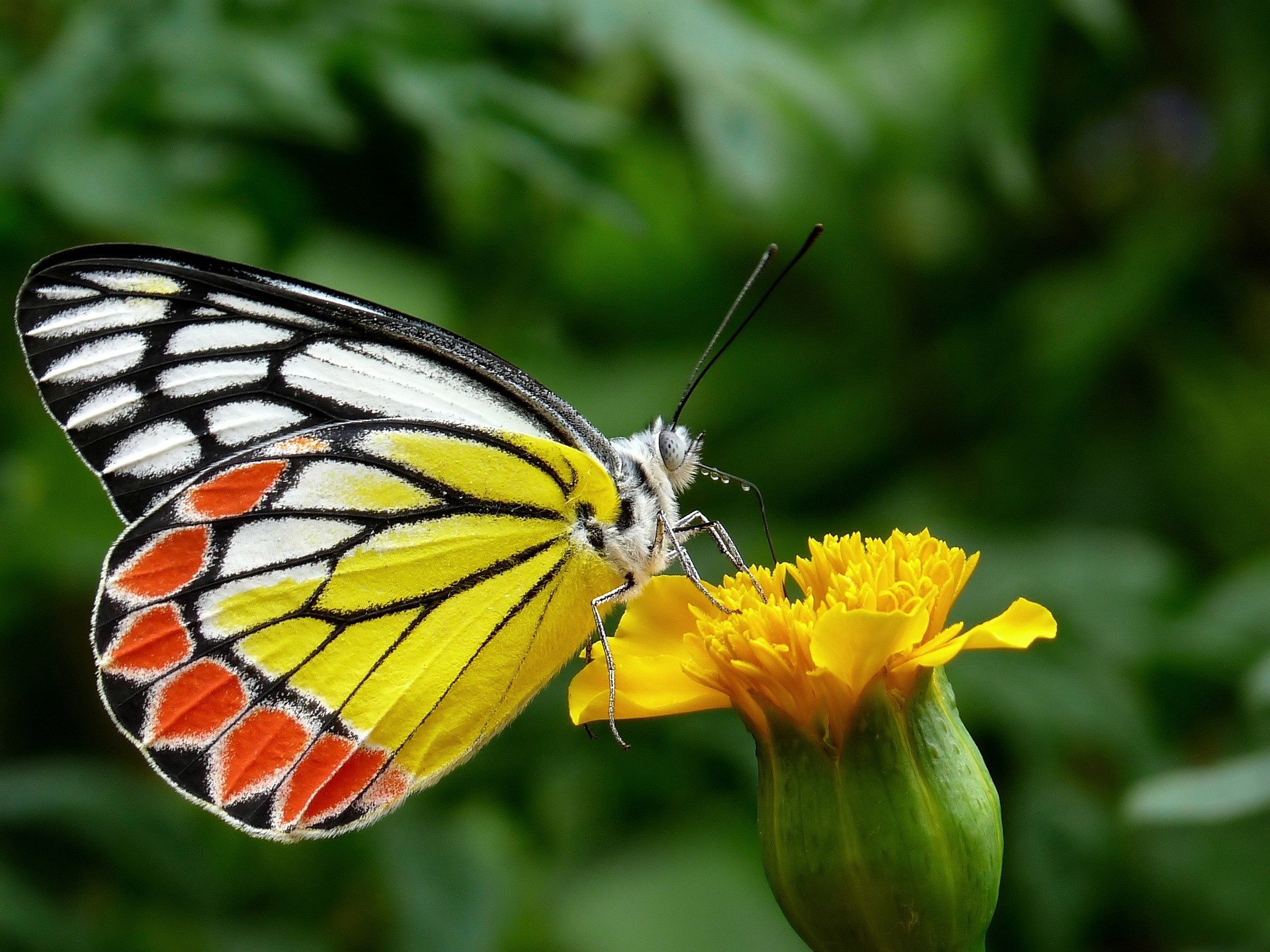The Butterfly Biomaterial Effect: Using Chitin to Shape the Future of Engineering and Biomedicine
Researchers uncover the promising capability of chitin as a sustainable smart biomaterial. Through water exchange with the environment, humidity-responsive chitinous films can generate energy for potential use in engineering applications
Jul 26, 2023
Image by David Mark from Pixabay
In a groundbreaking study that draws inspiration from the intricate process of butterfly metamorphosis, Associate Professor Javier G. Fernandez and his team at the Singapore University of Technology and Design (SUTD) have unlocked the potential of chitin, an organic polymer, for engineering and biomedical applications.
Chitin, the primary component of arthropod shells and butterfly wings, undergoes a fascinating transformation as a butterfly emerges from its cocoon. The chitinous material dehydrates while blood pumps through the butterfly's veins, causing the molecules to reorganize and provide the necessary strength and stiffness for flight. This natural interplay of forces, water movement, and molecular organization has been the guiding principle behind Assoc Prof Fernandez's research.
In their latest study, published in Advanced Materials Technologies, the team has shed light on the adaptability and molecular changes of chitinous materials in response to environmental changes. The researchers have demonstrated that chitinous polymers, even after extraction from natural sources, retain their inherent ability to link different forces, molecular organization, and water content to generate mechanical movement and produce electricity without the need for an external power source or control system.
"Chitinous polymers retain their natural ability to link different forces, molecular organization, and water content to generate mechanical movement and produce electricity without the need for an external power source or control system," said Assoc Prof Fernandez, emphasizing the unique features that make chitinous polymers energy-efficient and biocompatible smart materials.
Chitin, the second most abundant organic polymer in nature after cellulose, can be sustainably sourced from multiple organisms, including urban waste. The team extracted chitinous polymers from discarded shrimp shells to create films that are about 130.5 micrometers thick. They discovered that similar to the unfolding wings of butterflies, stretching the chitinous films reorganized the crystalline structure, making the molecules more tightly packed and reducing the water content.
“In this study, the arthropod exoskeleton's chitinous composition and manufacturing strategies are used to reproduce its complex relations with external forces and water-driven molecular rearrangement and use them to produce electricity and actuate a mechanical hand,” the authors wrote. “The proposed technology is unique in combining the generation of strong forces and the integration of the principles and materials of biological organisms, leading to significant advances in the design and performance of passive solutions integrated into biological systems for a wide range of applications, such as biorobotics, medical devices, and energy harvesting.”
The researchers transformed the chitinous films, which originally had characteristics similar to commodity plastics, into a material resembling plastics for specialized engineering purposes. Unlike synthetic polymers, the reorganized chitinous films could autonomously relax and contract in response to environmental changes, similar to how some insects adapt their shell to different situations. This ability enabled the chitinous films to lift objects weighing over 4.5 kilograms vertically.
In a demonstration of the engineering applicability of the biocompatible films, the research team assembled them in a mechanical hand. By controlling the intermolecular water of the films through environmental changes and biochemical processes, the team created enough force for the hand to display a gripping motion. The gripping force was equivalent to 18 kilograms—more than half the average grip strength of an adult. This ability to produce such force through biochemical means suggests the potential seamless integration of chitinous films into biological systems and their suitability for biomedical applications, such as artificial muscles and medical implants.
In another demonstration, the team showed that the material's response to humidity changes could be used to harvest energy from environmental changes and convert it into electricity. By attaching the films to a piezoelectric material, the mechanical motion of the films in response to humidity changes was converted into electrical currents suitable to power small electronics.
Assoc Prof Fernandez's proof-of-concept study illustrates how both the native mechanical characteristics and embedded functionalities of chitin can be reproduced, emphasizing the potential use of chitin in engineering and biomedical applications. He believes that materials like chitin play a vital role in the transition to a more sustainable paradigm, which he terms the biomaterial age.
"Chitin is used for many complex functions in nature, from making the wings of insects to forming the hard protective shells of mollusks, and has direct engineering application. Our ability to understand and use chitin in its native form is critical to enable new engineering applications and develop them within a paradigm of ecological integration and low energy," concluded Assoc Prof Fernandez.


















